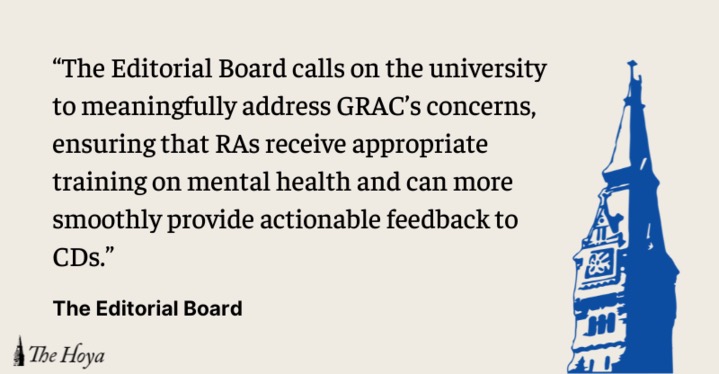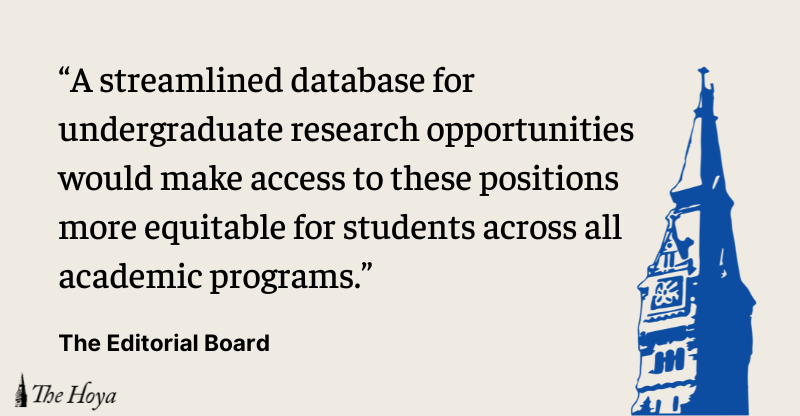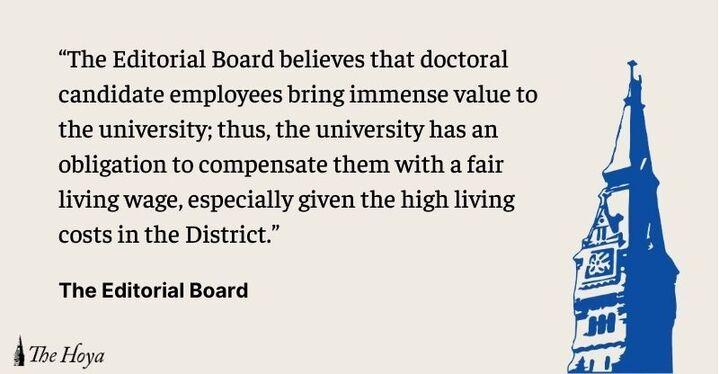While Georgetown’s mission and administration have historically fought to create an inclusive environment for its Jewish students, the campus has long been — and still is — an unfortunate microcosm of existing anti-Semitism beyond the gates.
As students committed to Jesuit values, we must learn from our predecessors’ mistakes to reveal and combat modern anti-Semitism.
Last month, Lauinger Library published archived editions of The Hoya dating back to 1930. The new digital collection included a 1939 editorial calling for more coverage of persecuted Christians and less coverage of Nazi-persecuted Jews.
The editorial asked why Adolf Hitler’s “anti-religious scourge has received such tremendous publicity in this Christian country.” The 1939 editorial board then answered its own question: “The great syndicates are controlled mainly by the brethren of the victims of Nazi oppression,” meaning the Jewish people.
Unfortunately, the 1939 editorial does not stand alone; Georgetown’s history is dotted with instances of anti-Semitic incidents.
During the first half of the 20th century, Georgetown limited Jewish attendance through quotas, according to Georgetown University Student Association historian Ari Goldstein (COL ’18). University admissions allowed only five Jewish students to be admitted per year.
In 1966, several Georgetown students dressed as Nazi soldiers at a basketball game against New York University, according to current reporting by the Jewish Telegraphic Agency, a nonprofit dedicated to reporting on “issues of Jewish interest and concern.” Before he apologized for the incident 10 days later, Fr. Anthony Zeits, S.J. — then-director of student personnel — insisted that no anti-Semitic remarks were made.
In September 2016, a bathroom in the Georgetown University Medical Center was defaced with a swastika and the letters “KKK”. In May 2017, anti-Semitic graffiti was found in a restroom near The Makóm Jewish Gathering Space in the Leavey Center; this incident was one of nine reported in the past year.
These horrific actions are indicative of what happens when anti-Semitism bubbles under the surface of daily discourse, unacknowledged and ignored.
Georgetown’s administration has maintained a resilient commitment to Jewish students since founder John Carroll pledged to admit students from all faiths and backgrounds.
The Anti-Defamation League presented its 2017 Achievement award, given to those who “work for a larger impact in the positive shaping of their communities,” to University President John J. DeGioia. The ADL praised the 2016 opening of Georgetown’s Center for Jewish Civilization and DeGioia’s work with the ADL on Bearing Witness, an effort to train Catholic educators in teaching the history of anti-Semitism.
Georgetown’s message of religious tolerance must remain strong amid today’s rising anti-Semitism.
Blatant anti-Semitism on campus is quickly noticed, widely reported and eventually addressed — at least 12 student groups, including GU College Democrats, GU College Republicans and GUSA, released statements condemning the graffiti in fall 2017. The insidiousness of anti-Semitism, however, permeates the lives of Jewish students with alarming frequency.
In spring 2017, the Jewish Student Association at Georgetown sent a survey to students active in the Jewish community. In these previously unreleased statistics, 87 percent of the 38 students surveyed said they often, always or regularly felt “welcome and accepted as a Jewish student on campus.” Yet, 71 percent reported experiencing anti-Semitism at Georgetown. The survey indicates the far reaches of anti-Semitism.
Progress toward true inclusion demands that students are conscious of their everyday biases. For example, Jewish students who support Israel should not be forced to renounce Israel in exchange for acceptance into certain progressive spaces. No students should be excluded from any space on the basis of their identity.
The record of Georgetown students on anti-Semitism is imperfect, and the too-often unaccepting climate of the present has been exposed; the abhorrent views of our distant predecessors and the reckless actions of our peers serve as unflattering evidence.
Georgetown has evolved since 1939, but there is much more work to be done. For the Jewish community to be fully accepted and included at Georgetown, we students must honestly confront the frequent anti-Semitism present in the lives of our peers.
This editorial was updated Feb. 25 to reflect Georgetown University’s past admissions quota applied to prospective Jewish students.








Jack the Bullfrog • Feb 6, 2018 at 2:39 pm
The Editorial Board: Georgetown students’ toilet paper and makeshift umbrellas since 1939
Ari Shapiro • Feb 2, 2018 at 10:36 am
I find it interesting that, regarding existing biases, the author highlights Israel, but not Christian doctrine (past and present) that has historically contributed to much greater abuses against Jews.